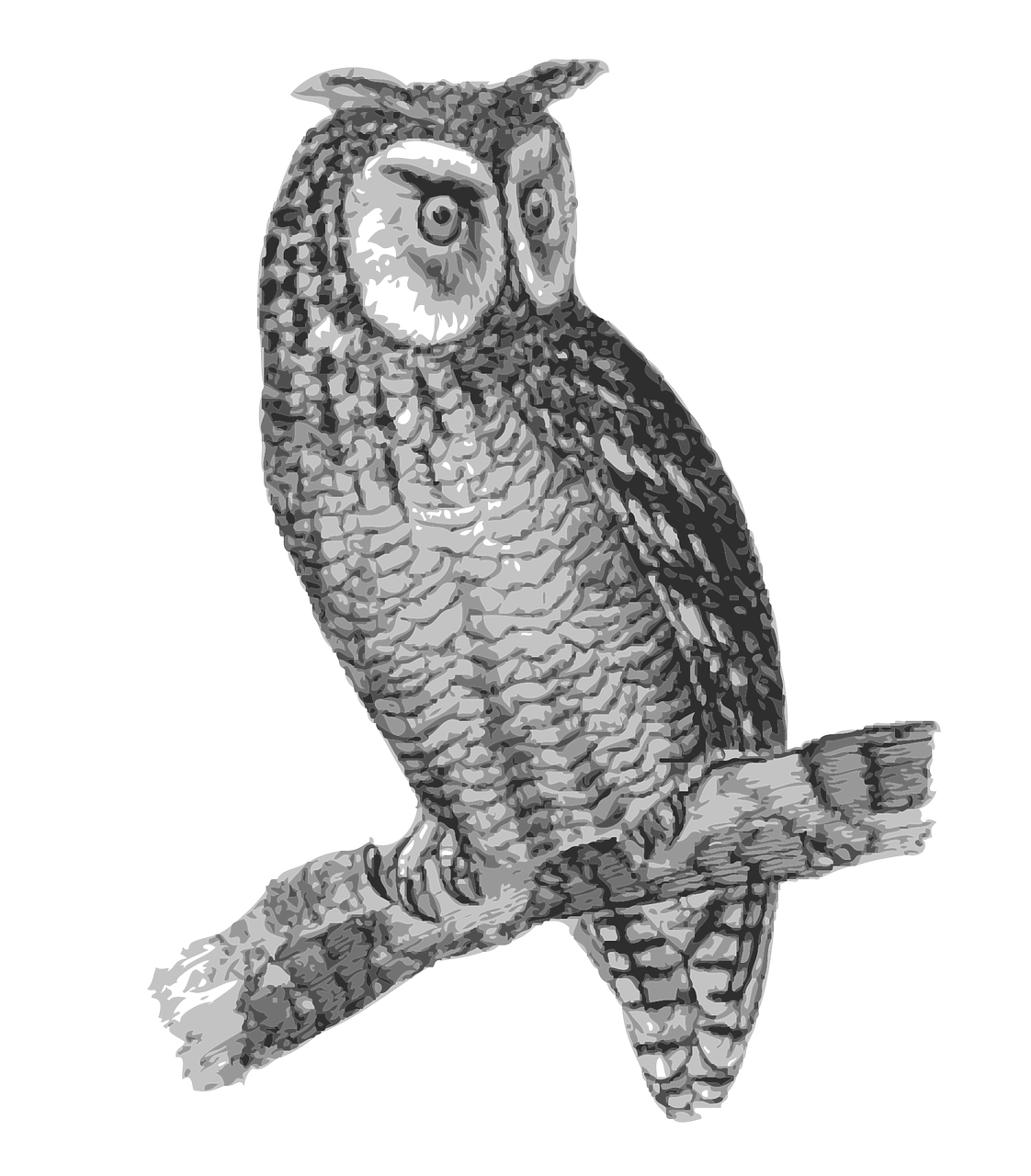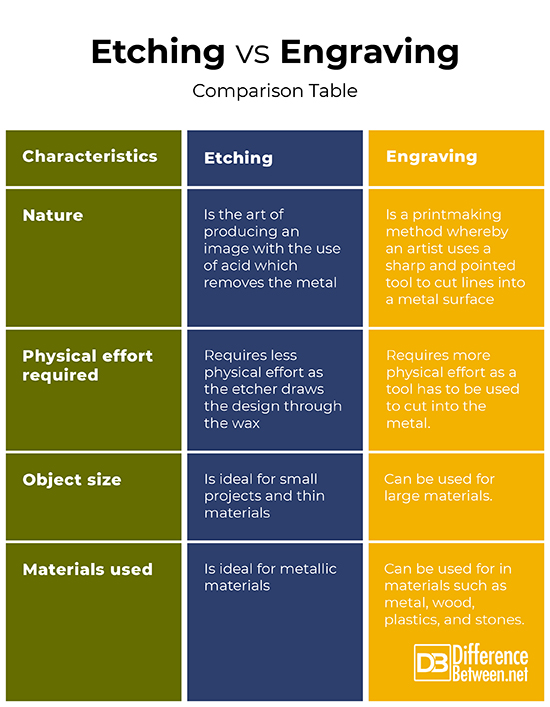Difference between Etching and Engraving
Human beings cannot exist without the printing industry. In the world of printmaking and print development, several methods are used to create different images from a metal plate, a hard surface and even a flat surface. Some of these methods include etching and engraving.
What is Etching?
It is the art of producing an image with the use of acid which removes the metal, as opposed to cutting the metal surface with a tool. Most commonly, a layer of wax is used as a ground, which is resistant to the acids being used. Using a pointed needle, the desired image is then drawn through the wax, with the use of a metal tool. Acid is then applied to the surface, guided by the lines drawn through the wax, hence producing lines of different depth.
The softness of the line resulting from the work of acid, together with the easy needle strokes go hand in hand to produce appearance resembling that of fine pencil drawing.
There are various types of etching, such as glass etching, water etching, laser etching, dry etching, soft ground etching, sugar lift etching, and gravure etching, just to name a few.
There are advantages associated with etching, such as;
- It saves on materials used
- It uses high speed hence fastens the process
- It can be used for many materials
- It is cost efficient
- Provides durability
- It is precise in the end product
It, however, has a few disadvantages
- It requires large amounts of etchant chemicals which need to be consistently removed
- Chemical contamination may affect the end result
What is Engraving?
This is a printmaking method whereby an artist uses a sharp and pointed tool, referred to as burin, to cut lines into a metal surface, a process called incising. The metal plate is thereafter inked, and the ink is then forced into the grooves made with the burin, after which the plate is pressed. This process can be accomplished by use of a machine or by hand and is mainly used to make jewelry, silverware, and guns just to mention a few. It may be preferred due to the fact that it requires less effort. Copper is the most ideal metal used for engraving.
It may be preferred because;
- It can be used to make any pattern or line
- It requires less effort
The disadvantages are;
- It is expensive
- The processing speed is low
- It is difficult to choose which metal to use. For instance, the softness of copper makes the image vulnerable to rapid wear while steel makes the engraving more tasking due to its hard texture.
Similarities between etching and engraving
- They are both methods of cutting lines into hard surfaces
Differences between Etching and Engraving
-
Nature of Etching and Engraving
While etching is the art of producing an image with the use of acid which removes the metal, engraving is a printmaking method whereby an artist uses a sharp and pointed tool to cut lines into a metal surface.
-
Physical effort required for Etching and Engraving
Etching requires less physical effort as the etcher draws the design through the wax. On the other hand, engraving requires more physical effort as a tool has to be used to cut into the metal.
-
Object size
Etching is ideal for small projects and thin materials. On the other hand, engraving can be used for large materials.
-
Materials used in Etching and Engraving
While etching is ideal for metallic materials, engraving can be used for in materials such as metal, wood, plastics and, stones.
Etching vs. Engraving: Comparison Table
Summary of Etching vs. Engraving
Although used for the same purpose, the process in etching and engraving is different, with each having special procedures. The method to choose mainly depends on the kind of metal to be used, skill availability, the preferable outcome and the option of either using a physical process or a chemical process.
- Difference Between Profit Center and Investment Center - July 2, 2022
- Difference Between Anti-Trust and Anti-Competition - June 6, 2022
- Difference Between Stocktaking and Stock Control - June 6, 2022
Search DifferenceBetween.net :
Leave a Response
References :
[0]Wright John. Etching and Engraving: Techniques and the Modern Trend. Courier Corporation Publishers, 1973. https://books.google.co.ke/books?id=4zjwRh97QCMC&printsec=frontcover&dq=difference+between+etching+and+engraving&hl=en&sa=X&ved=0ahUKEwjMgt_c54bfAhWtVRUIHUfFA9EQ6AEIKDAA#v=onepage&q=difference%20between%20etching%20and%20engraving&f=false
[1]Leaf Ruth. Etching, Engraving and Other Intaglio Printmaking Techniques. Courier Corporation Publishers, 2012. https://books.google.co.ke/books?id=10TCAgAAQBAJ&printsec=frontcover&dq=difference+between+etching+and+engraving&hl=en&sa=X&ved=0ahUKEwjMgt_c54bfAhWtVRUIHUfFA9EQ6AEIMzAC#v=onepage&q=difference%20between%20etching%20and%20engraving&f=false
[2]Griffiths Anthony. Prints and Printmaking: An Introduction to the History and Techniques. University of California Press, 1996. https://books.google.co.ke/books?id=nbxFOR8ujlYC&printsec=frontcover&dq=difference+between+etching+and+engraving&hl=en&sa=X&ved=0ahUKEwigmfeU64bfAhUHSRUIHReAA3s4FBDoAQhMMAc#v=onepage&q=difference%20between%20etching%20and%20engraving&f=false
[3]Image credit: https://www.publicdomainpictures.net/en/view-image.php?image=257404&picture=tiger-portrait-etching
[4]Image credit: https://pixabay.com/en/bird-engraving-owl-1299858/



